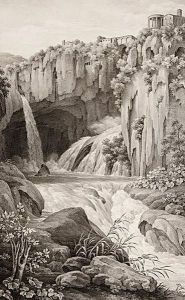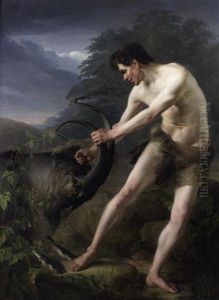Friedrich Rehberg Paintings
Friedrich Rehberg was a distinguished German artist and engraver, born in Hanover in 1758. His journey into the arts was marked by his initial studies at the Hanover Academy, where he first honed his skills. Rehberg's talent and passion for art propelled him to further his studies in Italy, a country renowned for its rich artistic heritage and the home of the Renaissance. It was there, in the vibrant cities of Rome and Naples, that Rehberg's style and technique flourished, deeply influenced by the classical art and the burgeoning Neoclassical movement that captivated Europe at the time.
Throughout his career, Rehberg became celebrated for his portrait drawings and engravings, which were highly regarded for their precision, elegance, and expressiveness. His ability to capture the essence and character of his subjects earned him commissions from various European aristocrats and intellectuals, further establishing his reputation across the continent. Moreover, Rehberg's contributions to the arts were not limited to portraiture. He also engaged in historical and mythological themes, embedding his works with a sense of drama and emotion that was characteristic of the Neoclassical movement.
One of Rehberg's notable collaborations was with the British sculptor John Flaxman, with whom he worked on illustrations for editions of works by Homer and Dante. This partnership exemplified the synergy between Neoclassical sculpture and illustration, blending Flaxman's sculptural designs with Rehberg's mastery of line and form. The resulting illustrations were celebrated for their beauty and clarity, contributing significantly to the visual culture of the era.
Friedrich Rehberg's legacy is that of an artist who bridged the gap between classical inspirations and the emerging Neoclassical ideals of his time. His works, preserved in various collections and museums, continue to be studied and admired for their technical skill and artistic sensibility. Rehberg passed away in 1835, leaving behind a body of work that remains a testament to his contributions to the world of art and engraving during a pivotal period in European art history.









